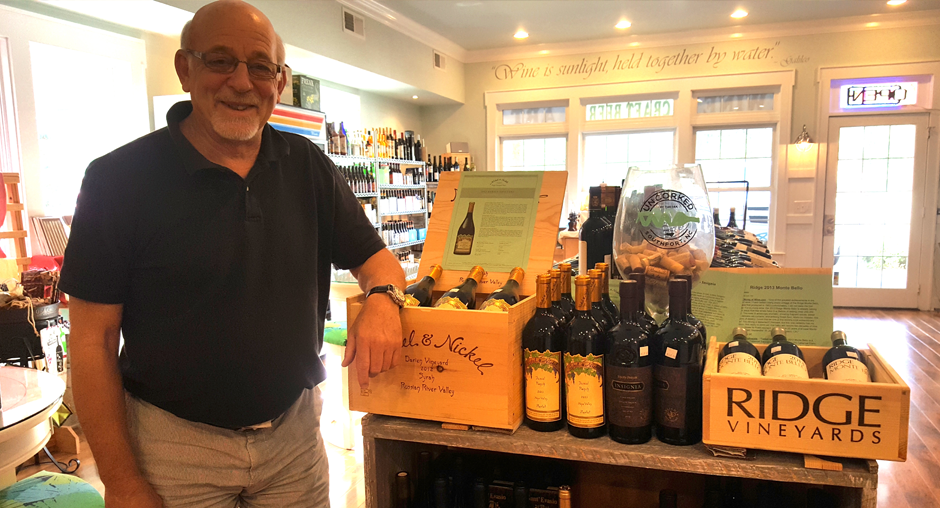Blended Wines

BY: PAUL WASSERMAN,
PARTNER AT UNCORKED BY THE SEA
A day doesn’t go by with at least one customer coming to Uncorked asking which wines are ‘blended’ wines. And in response I often share that with very few exceptions, nearly every wine we offer is a blend of one type or another.
At Uncorked by the Sea blends are in 3 categories: Multiple Varietals: These are wines made of two or more grape varieties. Multiple Vineyard sites: These wines can be made from one specific variety or multiple varieties but also the grapes are taken from multiple vineyard sites. Multiple Vintages: Just like the first two categories, these wines might be multiple varieties, and multiple vineyards. But what separates this category is that it is from multiple vintages. These used to be called ‘non-vintage’ wines. At uncorked we call these wines ‘multi-vintage’ wines.
The tradition of blending grape varieties began centuries ago in Europe and most notably in various appellations in France. The wines of Bordeaux began this tradition centuries ago. Centuries of experimentation proved 5 varieties were best suited to this region: Cabernet Sauvignon, Merlot, Cabernet Franc, Petit Verdot and Malbec.
This trial and error period also demonstrated that Bordeaux is naturally divided into The Right Bank wineries and Left Bank wineries. The Right Bank Wines are predominantly Merlot with amounts of some or all 4 additional varieties. The left bank, wines are basically Cabernet Sauvignon with addition of some or all of the other 4 varieties.
The Northern and Southern Rhone appellations are excellent examples of this tradition.Through centuries of wine- making the vinerons of the Rhone have learned which varieties thrive in which soils and climates. While Grenache and Syrah are planted in the north and south and are widely used throughout the region, one appellation has 13 approved varieties: Châteauneuf-du-Pape.
The Languedoc-Roussillon and its sub appellations produces more wine than all of the areas of production in the US combined. This region produces quite a bit of single varietal wines. But using the varieties of the Rhone this appellation produces millions of bottles of quality wine.
As more and more Europeans came to the ‘new world’ with them came their traditions. And in this instance their winemaking traditions. Just as they had learned in their native countries that certain varieties work best in certain soils and climates, they applied those principles here, as well.
The tradition of blending, in one category or another is practiced in nearly every region of production in the United States. From Napa Valley to Sonoma down to Lodi and Paso Robles the tradition of blending is practiced. When we talk of blended wines we’re usually including red wines. But the same tradition holds true for many white wine appellations in Europe and a multitude of regions throughout the world of winemaking.
The white wines of the Rhone valley are with very few exception are blended using one or more of the ‘blending categories. Two workhorse varieties of these blended wines are Grenache Blanc and Viognier. These same two are often blended in Australia and the US for that matter.
Going back to Bordeaux, the white wines of the appellation Pessac-Leognan are a blend of Sauvignon Blanc as the majority variety and Semillon as the blend grape. This blend is practiced in nearly every region where Sauvignon Blanc is cultivated.
Here in the US and other regions, I suspect, bold multi-varietal blends are being produced. An example of this style of blend is Orin Swift Cellars Mannequin. It starts off with a heavy dose of Chardonnay then white Rhone varieties, Grenache Blanc, Viognier and maybe some Roussanne or Marsanne are add to create an exotic lush wine. Another example is Blindfold White Blend from The Prisoner Wine Company; this is a blend of 4 white Rhone varieties with Chenin Blanc added for good measure. Looking at the shelves at Uncorked, you don’t have to look too hard to locate red blends from a number of AVA’s and Appellations.
Without going overboard, here are a few of our featured red blends: Coup De Grace from Lodi a blend of Zinfan- del, Petite Syrah, Petit Verdot and Cabernet Franc. Tablas Creek Vineyard Patelin de Tablas of Paso Robles fame, this is a blend of Rhone vari- eties. Langmeil ‘Three Gardens’ from The Barossa in Australia is an SMG: Syrah, Mataro and Grenache Shafer Relentless Napa Valley is a blend of Syrah and Petite Syrah Hallowed Ground, a California Red is a blend of Zinfandel, Petite Syrah, Grenache, Car inane and Charbono Joseph Phelps Insignia Napa Valley: Cabernet Sauvignon, Petit Verdot, Mer- lot, Malbec, and Cabernet Franc.
What is truly unique about these blends, red and white, is their versatility. Blending creates layers of flavors and aromas. It is this aspect that pairs these wines with a variety of cuisines and dishes.
The white Rhone blends pair particularly well with seafood, shellfish to be specific.
The red blends work well with all medium to heavy dishes. Everything from a simple burger on the grill to chicken and lamb. And I wouldn’t exclude any of these as my Thanksgiving wine. Think of any of these to accompany any of your holiday feasts.
Finally, what all of these blends create are wines, in the final analysis, greater than the sum of their parts. And the reason a winemaker decides to blend several varieties is that each variety contributes to the whole that becomes greater than its parts.











Leave a Reply